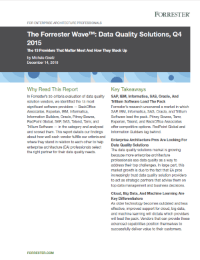Every year there is one day where advertisers get ready to empty their pockets and spend to get their brand and messaging in front of millions of users worldwide. With the guarantee of captivating the attentions of possibly the largest stationary audience at one time, advertisers are more willing than ever to spend through the roof to be front and center. This special day comes once a year, and is one of the few times commercials and advertising are paid attention to—looked forward to even—this day is Super Bowl Sunday.
One common theme we've seen in advertising over past few years is the use of data. Many advertisers report on metrics and other data benchmarks to laud their brand and products over their competitors. Knowing it’s a world of multi-screen attribution, advertisers on Super Bowl Sunday not only prepare to advertise on TV screens worldwide, but also on laptops, mobile phones, tablets, and other devices as the diversification of screens to consume content increases.
With 30 seconds of fame costing advertisers as much as five million dollars, advertisers have one shot to capitalize on this opportunity and maximize revenue. (Interestingly enough, a survey conducted by Genesis Media of a sample of 10,000 revealed that nearly 90 percent of respondents said they probably wouldn’t buy something tied to a Super Bowl ad. About 75 percent said they couldn’t remember ads from the previous year.)
Regardless, brands aren’t deterred. They now use metrics and statistics to position themselves above their competitors. You’ll have seen this in any new wireless carrier commercial (Verizon, Sprint, T-Mobile, etc.), or with cable versus satellite—all these companies are using data-driven messages to captivate their audience and win over customers.
The question now comes into play: How do these advertisers optimize these ads and increase effectiveness? The answer is the use of data in emerging technologies. One of the most innovative technology companies of our time, Apple, has been working on a technology to enable advertisers to better measure the effectiveness of their commercials and messaging. Without giving the details of the deal, Apple purchased Emotient, a San Diego-based maker of facial recognition software that can help detect emotions to assist advertisers, retailers, doctors, and those in many other professions.
With artificial intelligence becoming more of a reality than a science fiction pipe dream, companies like Apple and Facebook are increasing their acquisition of technologies to move them closer to the goal. Emotient’s software can detect emotions such as joy, disgust, anger, and surprise, and can give real-time feedback to advertisers, ensuring quality data around measuring the efficacy of their commercials, ads, and how real people feel about their brand.
Today, companies have new ways of utilizing data and data management practices through emerging technologies such as Emotient. They have to now make sure the data they receive is actionable, of good quality, and use it for more intelligent insight. Capturing these data points and using them to enrich their databases will be key in the future as these technologies emerge and become more prevalent. When spending millions for seconds of fame, this kind of data intelligence is invaluable and is the kind of quality data that was never available before.
Now this Sunday when you’re watching the Super Bowl—in between ingesting unhealthy amounts of buffalo wings and IPAs— you can think about what kinds of data these advertisers used in creating their best commercials of the year!
And in recognition of the rise in data initiatives and how proper data management is more important than ever, we’ve highlighted the strategies to best utilize data within your organization in our 2016 global data management benchmark report.
Download




